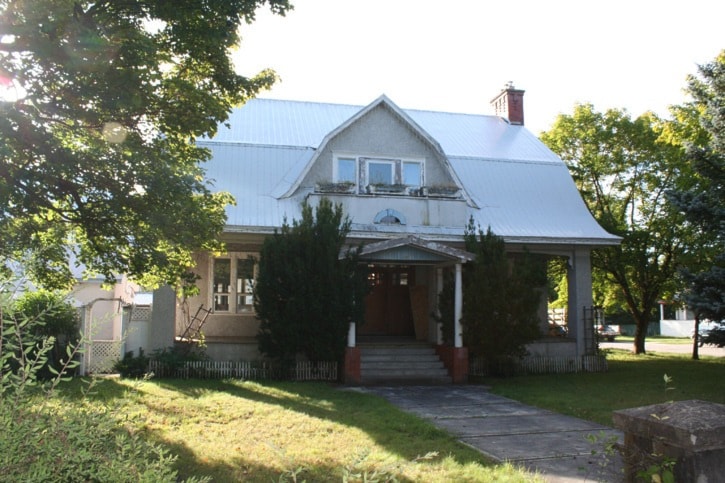A dispute between the owner of a heritage-listed property and the City of Revelstoke could have implications for all heritage buildings in Revelstoke and also a financial impact on city taxpayers.
At their Aug. 9 meeting, city council ordered the owner of the heritage-listed property at 714 Mackenzie Avenue to repair significant interior damage and alterations to the house within 45 days.
The house was built in 1913 for W.A. Anstie, president of Forest Mills Ltd. It was designed by Architect William Wallace and built by contractors Foote and Pradolini, who are most well known for building the Revelstoke Courthouse. In 2007 the house was damaged by a fire and has been uninhabited since. In the meantime, much of the interior of the house has been gutted, as shown in inspection documents provided by the city. Walls, beams and much of the interior finishings have been removed.
On Aug. 25, building owner John Skrypnyk appeared before council along with his Victoria-based lawyer John Alexander, who addressed council via telephone.
Alexander told council their remedial action order was “completely and totally unrealistic and unnecessary.” He emphasized the timeline of 45 days was just not doable.
At the core of his argument, Alexander said the city misunderstood the specific distinctions contained in B.C. heritage preservation legislation. Properties can be ‘listed,’ ‘protected,’ or ‘designated.’ Each one carried very specific meanings. Because the building at 714 Mackenzie was not ‘designated,’ one of the options available to the homeowner is demolition and rebuilding under heritage guidelines, Alexander argued. He said his client had applied for a demolition permit in September, 2010 and asked it be issued.
Alexander said the building was never a “designated” heritage building, which placed more restrictions on its owners and often involved some kind of compensation in return.
He said court proceedings have already been commenced, and the city had been served documents.
“If you are going to try and preserve this building, one way or the other, you are going to pay. It cannot be done for free. If you think it can, you have a misguided view of the rights of private property owners in this province under the heritage protection provisions of [our] legislation,” Alexander said.
Alexander told council the City of Revelstoke could wind up footing the bill for the renovations and legal costs, adding the price tag was often a “rude shock” to municipalities, and could easily run into the hundreds of thousands once lawyers, contractors, architects, designers and inspectors were done.
Alexander said recent changes to the City of Revelstoke Official Community Plan also supported his view.
He added that the city is obligated to issue a demolition permit because the building is currently a hazard.
After brief discussion, council opted to stay the course and stick with the remedial action order. They did amend the timeline, doubling the deadline from 45 to 90 days.
